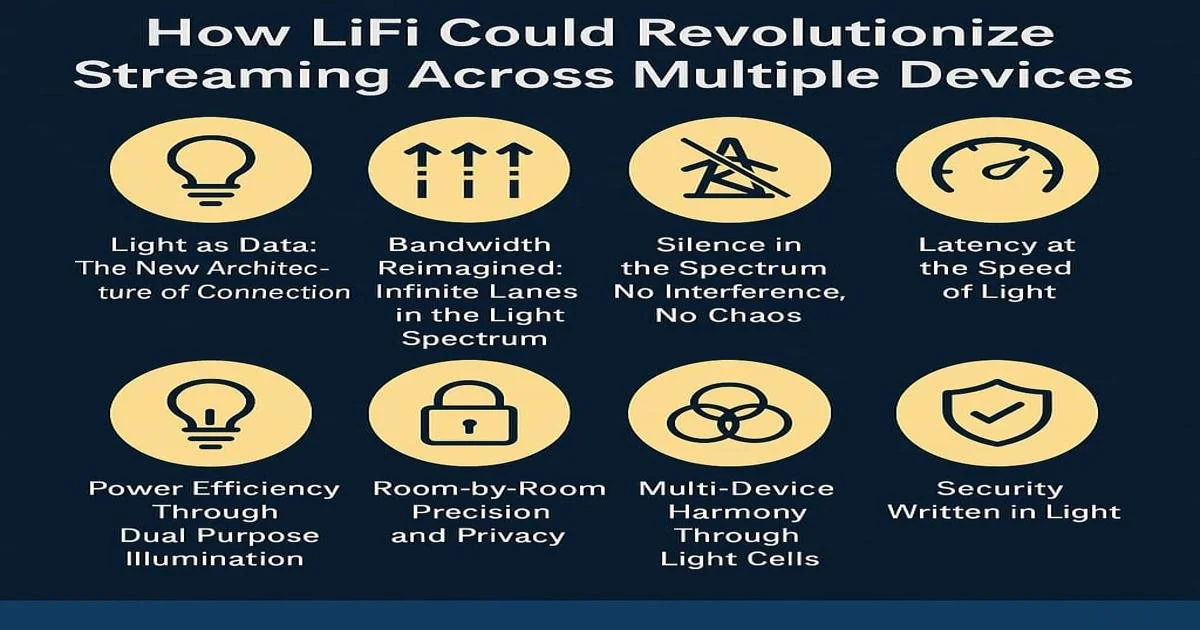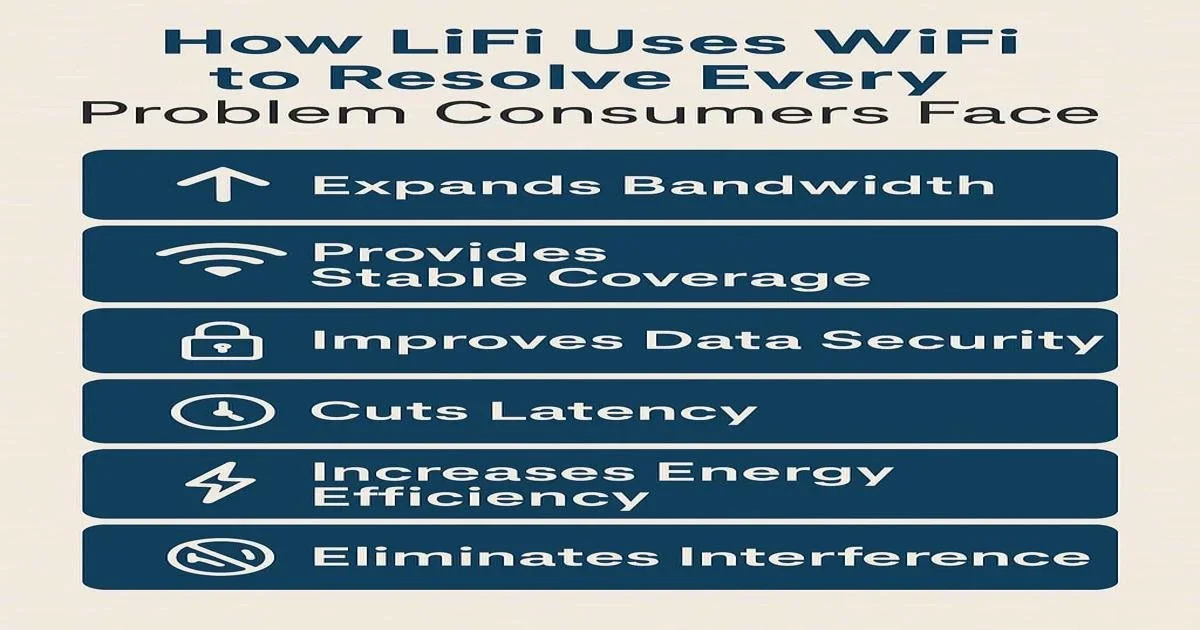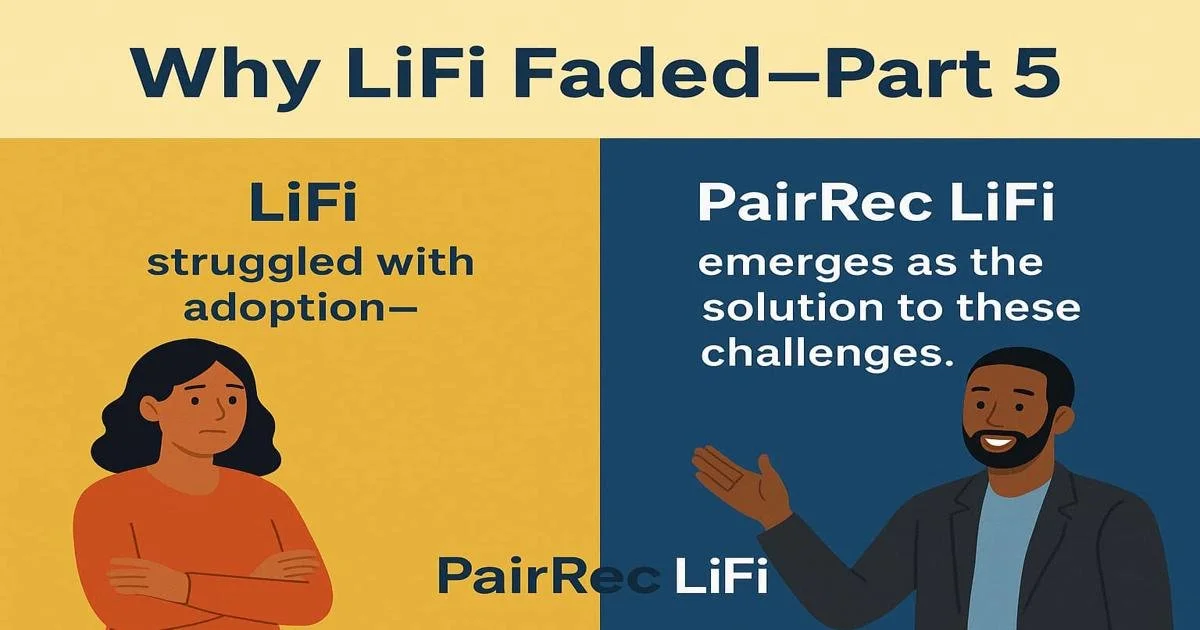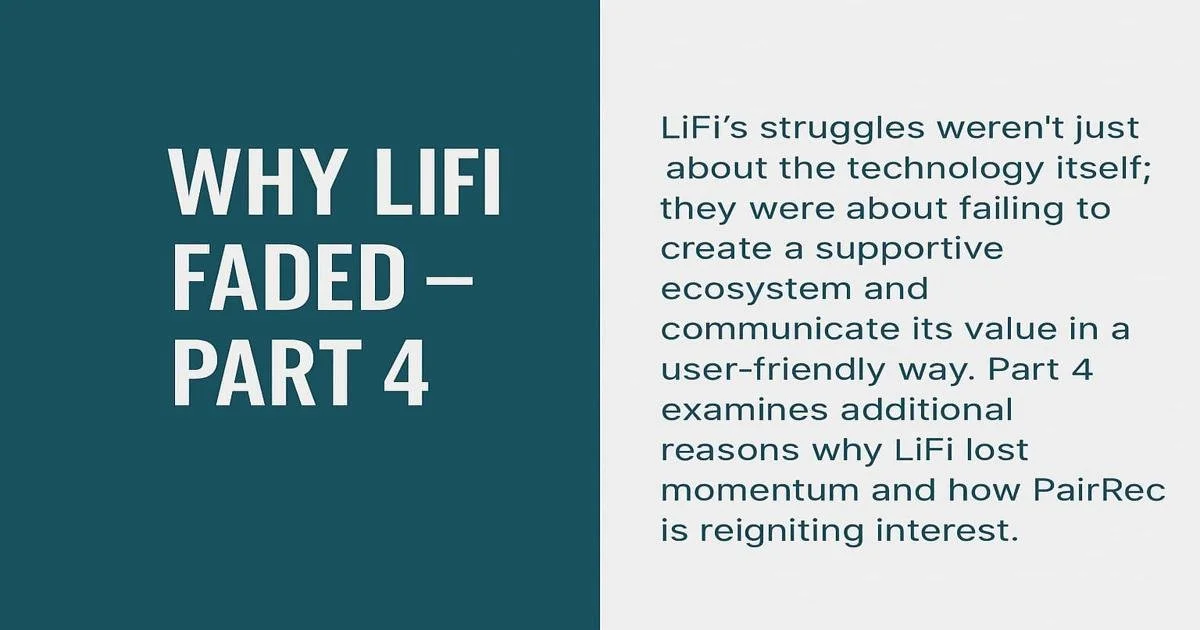How LiFi Could Revolutionize Streaming Across Multiple Devices
Imagine a world where every light in your home becomes a source of data — streaming movies, games, and music at the speed of light. How LiFi Could Revolutionize Streaming Across Multiple Devices reveals how this emerging technology reshapes connectivity, bringing stability, security, and performance to the digital age.
This article explores how PairRec LiFi SmartZones transform everyday illumination into a powerful communication network. Through light-based data, interference-free streaming, and eco-efficient design, LiFi offers a glimpse of a future where our homes, workplaces, and cities shine with intelligent connectivity.
WiFi vs LiFi: Why Today’s Internet Still Fails to Deliver the Connection We Deserve
WiFi has powered our world for decades, but it’s showing its age. Slow speeds, dropped connections, and mounting security concerns expose the limits of radio-based networking. It’s time for a smarter, faster, and more sustainable alternative.
PairRec LiFi turns light itself into connectivity—seamless, secure, and energy-efficient. Within PairRec SmartZones, illumination and internet merge into one intelligent ecosystem powered by innovation, automation, and solar energy. The future of connectivity doesn’t just glow—it shines.
Why LiFi Faded - Part 7
Despite its transformative promise, LiFi never reached some of the world’s most vulnerable communities. Entire groups—people with disabilities, rural populations, those without electricity or internet—were sidelined by a technology that claimed to be the future of global connectivity. Libraries, schools, and untargeted users remained untouched by a vision that lacked inclusivity.
Part 7 of the Why LiFi Faded series exposes these critical gaps in audience targeting and explores how PairRec is confronting them head-on. From solar-powered Smart Zones to accessible design principles, PairRec is making LiFi work for everyone—not just the tech elite. It’s time to turn the lights on for those left in the dark.
Why LiFi Faded - Part 6
Why LiFi Faded – Part 6 examines the hidden frictions that held back LiFi adoption, including fragmented standards, weak developer tooling, procurement and ownership confusion, and ineffective messaging. These challenges shaped how enterprises perceived LiFi, limiting its potential despite strong technological promise.
PairRec turns these past obstacles into opportunities. With Smart Zones that ship with certification frameworks, unified SDKs, subscription-friendly procurement, and compelling use-case storytelling, PairRec transforms LiFi from an experiment into an enterprise-ready solution. This installment reveals how innovation meets practicality on the path to global adoption.
Why LiFi Faded—Part 5
Why LiFi Faded – Part 5 examines four critical reasons that slowed LiFi’s adoption: fragmented innovation, poor user experience, vendor lock-in, and weak support frameworks. These issues eroded confidence across industries and isolated LiFi from the broader ecosystem of WiFi, 5G, and IoT technologies.
PairRec takes these lessons to heart, transforming challenges into opportunities through its Smart Zone strategy. By focusing on interoperability, seamless user experiences, robust after-sales support, and ecosystem-first partnerships, PairRec is reshaping LiFi into a sustainable, people-centered technology ready for global adoption.
Why LiFi Faded – Part 4
LiFi once promised to transform connectivity with ultra-secure, high-speed wireless powered by light. But despite its groundbreaking potential, LiFi stumbled—plagued by poor consumer adoption, limited market awareness, and missed opportunities in partnerships and distribution.
In Part 4 of our series Why LiFi Faded, we explore the deeper reasons for its challenges and reveal how PairRec is solving them with Smart Zones, strategic alliances, and education initiatives. This is the story of how LiFi is finding its light again.
Why LiFi Faded – Part 3
Part 3 of Why LiFi Faded dives into the core challenges that stalled global LiFi adoption and the bold strategies PairRec is using to overcome them. From Europe’s missed opportunity to lead the market to the lack of industry standardization, excessive hardware costs, and poor public awareness, this installment uncovers why LiFi didn’t scale as expected.
PairRec’s solutions—spanning global branding, standardized protocols, affordable plug-and-play hardware, education campaigns, and seamless WiFi integration—are setting a new course for the technology. This article not only explains why LiFi struggled but also shows how it can now thrive, making it a must-read for innovators and decision-makers.
Why LiFi Faded - Part 2
Why did LiFi, once hailed as the future of wireless connectivity, fail to achieve global mass adoption? In Part 2 of our revealing series, we dive deeper into the technical, regulatory, and cultural roadblocks that derailed LiFi’s momentum—issues ranging from spectrum policy gaps and bandwidth limitations to high costs and public unawareness. These explanations expose the systemic weaknesses that even well-funded LiFi initiatives couldn’t overcome.
But this isn't just a postmortem—it's a roadmap forward. PairRec is charting a new course with Smart Zones that are modular, cost-efficient, and designed for real-world use. From plug-and-play lightbulbs and hybrid LiFi/WiFi routers to solar power integration and predictive maintenance, PairRec is delivering what LiFi never could: a practical, scalable solution. This blog post shows how we're rewriting the LiFi story—and why it’s finally time to believe in the light.
Why LiFi Faded - Part 1
LiFi once promised to transform how we transmit data—through light itself. But despite its groundbreaking potential, the technology never fully reached the mainstream. In this powerful and in-depth blog series, we unpack the reasons LiFi faded from the spotlight, starting with its early struggles around industry standardization, hardware limitations, and an imbalance between academic research and commercial execution.
From dimming expectations to a bright new future, Part 1 of this series explains how PairRec is stepping in to resolve the challenges that plagued LiFi’s past. By launching LiFi-powered Smart Zones and bridging the gaps between infrastructure, usability, and security, PairRec is reimagining LiFi for real-world adoption. This post sets the foundation for understanding where LiFi went wrong—and how it’s now being made right.
Can LiFi be used when internet networks go down?
LiFi, or Light Fidelity, is emerging as a game-changing technology for maintaining connectivity during internet outages. Unlike WiFi, which relies on radio frequencies, LiFi uses light waves to transmit data, offering unique advantages such as immunity to RF interference and enhanced security. During a network outage, LiFi can function for localized communication as long as it is connected to a local server or backup network, making it an excellent tool for homes, businesses, and critical infrastructure. However, it does require a functioning light source and line-of-sight, which can present challenges in certain environments.
As traditional networks struggle with increased demand and unexpected disruptions, LiFi provides a reliable alternative for specific scenarios, such as disaster recovery, emergency response, and smart home setups. Its ability to operate independently of RF-based systems makes it especially valuable in secure environments and areas prone to network failures. While LiFi may not replace WiFi entirely, it serves as a robust complement, ensuring continuous connectivity in situations where traditional networks fall short. For those seeking innovative and resilient solutions to internet outages, LiFi offers a glimpse into the future of localized, secure communication.
Can WiFi and LiFi be Used Simultaneously?
In the ever-evolving landscape of wireless communication, WiFi and LiFi stand out for their unique advantages. This comprehensive guide explores whether these technologies can be used together, comparing their functionalities, advantages, and disadvantages. Discover how WiFi and LiFi can complement each other to optimize your connectivity experience, enhance security, and reduce interference in various environments. Learn about practical applications, frequently asked questions, and test your knowledge with a quiz. Explore the future of connectivity with insights from the PairRec LiFi blog.
WiFi uses radio waves to provide wireless high-speed Internet and network connections, making it ideal for broad coverage and multiple device connectivity. On the other hand, LiFi uses visible light to transmit data at higher speeds with increased security. By leveraging the strengths of both technologies, users can achieve a more robust and efficient wireless communication system. Whether enhancing indoor connectivity, improving security, or reducing interference in high-demand environments, the combined use of WiFi and LiFi offers unparalleled benefits.
Stay tuned to the PairRec LiFi blog for the latest updates and expert advice on integrating these technologies to create a seamless and powerful network experience.










